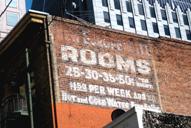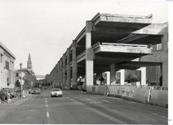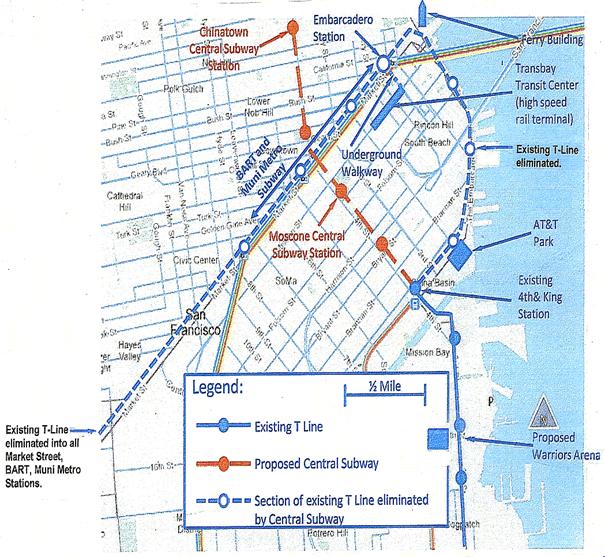Creative Solutions: Fast, Intuitive, Simple
 Government and public policy serve everyone—not just the rich and influential. San Francisco has been enriched by great wealth as well as cultural and economic diversity. Sparked by a beautiful environment and a strategic geography, San Francisco’s eminence evolved through a complex mix of peoples, cultures, ideas, enterprise, finance, free-thought and creativity—which must be nurtured to incubate future innovation.
Government and public policy serve everyone—not just the rich and influential. San Francisco has been enriched by great wealth as well as cultural and economic diversity. Sparked by a beautiful environment and a strategic geography, San Francisco’s eminence evolved through a complex mix of peoples, cultures, ideas, enterprise, finance, free-thought and creativity—which must be nurtured to incubate future innovation.

San Francisco stirs the creative and economic primordial pot—anything can happen—with a rich blend of beauty, culture, historicism, diversity and imagination….But unlike gold rush settlers, ethnic immigrants, beatniks, hippies, freeway battlers, environmentalists, geeks, gays and unionists, today’s tech boom is undermining the diverse social mix that spawned the creativity of the past. Gentrification and rocketing property prices are homogenizing the city. Balanced public policy is necessary—to save the golden goose.
 Public policy must cultivate the next great innovation, social movement, creative spark and crazy cultural cross-pollination—integral to San Francisco’s urban genetic code. Remember, San Francisco’s inherent qualities as a tech-magnet include regional universities/ colleges, innovative research hubs, technology centers, historical links to the counterculture, television, microprocessor, silicon chip, computer, software, Internet… Today’s tech-movement follows in the footsteps of significant social movements, non-traditional thinking, entrepreneurial spirit, wild ideas, nonconformity…
Public policy must cultivate the next great innovation, social movement, creative spark and crazy cultural cross-pollination—integral to San Francisco’s urban genetic code. Remember, San Francisco’s inherent qualities as a tech-magnet include regional universities/ colleges, innovative research hubs, technology centers, historical links to the counterculture, television, microprocessor, silicon chip, computer, software, Internet… Today’s tech-movement follows in the footsteps of significant social movements, non-traditional thinking, entrepreneurial spirit, wild ideas, nonconformity…
 INTERRELATED SOLUTIONS
INTERRELATED SOLUTIONS
After wasting billions of dollars on persistent problems, it’s time for fresh integrated solutions—-public, private, public/ private, nonprofit, charitable, religious, individual… San Francisco’s worsening income inequality, on par with underdeveloped Rwanda, has the rich getting richer, the poor getting poorer and the middle-class being displaced. The wealth gap between top earners is 70 times the level of those at lower incomes. Hi-Tech workers, whose average annual wages rose to $156,000 in 2013, are impacting San Francisco’s real estate markets with unprecedented displacements.
 AFFORDABLE HOUSING AS PUBLIC POLICY
AFFORDABLE HOUSING AS PUBLIC POLICY
Affordable housing is a public policy choice. In earlier days, when rooms cost 25 cents a night, daily rentals and boarding houses meshed laborers, immigrants and the indigent into the societal fabric. A wide range of housing types should be legally-required or incentivized—by political choices, public policy, building/ planning codes, zoning, small unit sizes, micro-dwellings, “capsule” rooms, density/ height incentives, public financing, tax rebates, nonprofit development, public land and resources. Development alone is not a housing solution, especially when transportation, streets and city services do not expand correspondingly. The highest housing costs in the world are in development-oriented cities like Vancouver and Hong Kong.
[PEOPLE. POWER. MEDIA]: “Developers Aren’t Going to Solve the Housing Crisis in San Francisco”
http://www.peoplepowermedia.net/housing/Definitive-Response-to-Supply-side-Solutionists
“Activists marauding Google buses, the hippie enclave turning into a playground for the rich, the threat of beautiful Victorians being plowed over for boxy condos. The housing crisis in San Francisco is capturing the world’s attention, and it seems like every day there’s someone putting forward the magic bullet to mow down the housing boogeyman. But many of these solutions are obsessively focused on saving the day with a build, build, build strategy.
Affordability for working class people in San Francisco isn’t going to come from letting profit-driven developers have their way. After months of research and interviews by a journalist who has worked as a developer and on housing policy, this feature dismantles the arguments driving housing policy in the City and offers real solutions instead of “trickle-down” approaches.”
HOMELESSNESS: AN INTEGRATED EXPENDITURE PLAN
San Francisco spends $165 million on homeless services every year—but the homeless count remains unchanged at about 6,400 each year. Homelessness is a regional and national problem. People want to meld into San Francisco’s diverse mix, tolerant culture and charity. For long-term planning, public/ private/ nonprofit homeless dollars can build infrastructure—like temporary shelters, “capsule” housing, mobile bathrooms/ showers, consolidated centers for food, clothing, hygiene, training, services….. Over five years, $165 million/ year equals $825 million. Over ten years, $165 million/ year equals $1.65 billion.
TOKYO: “Homelessness In The World’s Largest City Just Hit A Record Low”
http://thinkprogress.org/economy/2014/10/27/3583324/tokyo-homeless/
 QUALITY INFRASTRUCTURE INVESTMENTS
QUALITY INFRASTRUCTURE INVESTMENTS
Urban infrastructure touches all our lives—constantly—in terms of streets, sidewalks, lighting, waterfronts, parks, trees, transit, bridges… Over time, infrastructure must be incrementally well-designed, maintained, repaired, cleaned….. Emphasis on simple things like cleanliness goes a long way.
Like beloved historic streetcars, well-planned, well-designed and well-maintained infrastructure can endure forever. Smart investments in quality apply to all public and private infrastructure.
SaveNorthBeachVillage’s project for street cleanliness:
NorthBeachCLEAN: Everyday, everyone picks up 1 piece of paper.
PUBLIC TRANSIT AS A LAND-USE WEAPON
In terms of urban planning, “Speed Kills [Neighborhoods]”—like freeway expansions, thoroughfares, redevelopment/ demolition, subways, subway stations, up-zoning, densification, gentrification…. The mere speeding up of commuter travel is sufficient to gentrify low and middle-income neighborhoods. Exacerbated by subway construction and rising prices, Chinatown already has declining Chinese population, high-priced residential development, SRO vacation rentals, demolitions of historic resources…. Improved surface transit is more democratic, diffusing gentrification impacts of subways.
 “The shuttle effect, and the commute that divides us”
“The shuttle effect, and the commute that divides us”
http://www.mercurynews.com/News/ci_27078188/Quinn:-The-shuttle-effect-and-the-commute-that-divides-us
One study by a UC Berkeley graduate student found that rents for a one-bedroom apartment were higher within a half-mile of a Google stop than rents in the same neighborhood but outside of the half-mile radius. At a stop at Dolores and 30th streets in San Francisco, one bedroom rents increased by 43 percent between 2010 and 2012 as opposed to 23 percent in the greater neighborhood. And seven out of 10 Ellis Act evictions occur within four blocks of a tech company stop, according to research by the Anti-Eviction Mapping Project. That 1985 state law allows property owners to evict tenants if the property is being taken off the rental market. That frees the property to be sold to tech workers, housing activists say. “We have seen a lot of property flipped to create housing for tech people who can just walk to their private bus stop,” said Erin McElroy, founder of the Anti-Eviction Mapping Project.
FAST, INEXPENSIVE MUNI MODERNAIZATION
The highest citywide transit priority is the Transit Preferential Streets Program (TPS)—prioritized by voters in 2003 Proposition K. TPS would quickly aim for a 60% transit modal share (like best transit cities in the world) instead of SF’s current 20% transit share. TPS would quickly implement bus rapid networks, dedicated bus lanes, low-floor vehicles, all-door boarding, pre-board pay machines, on-board pay machines, passenger enclosures, digital schedules, parking/ double-parking management, delivery schedules, street design, construction disruptions/ management, shuttle bus loops to major trunk lines….
ZURICH PUBLIC TRANSPORT: AN INTRODUCTION (links to other articles)
http://www.andynash.com/zrh-pages/ZRHpublictransport.html
The Integrated System: Many cities have developed three-level transit systems. These systems include buses or trams for short trips, metro or subway systems for intermediate-length trips within cities, and suburban rail systems for longer distance travel within the region. Zurich has adopted its two-level system to serve all trip lengths by implementing the transit priority system—which allows the buses and trains to serve the shorter intermediate-length trips efficiently and quickly—and by building more S-Bahn stations within the city than typical suburban rail systems—-which allows the S-Bahn to serve the longer intermediate-length trips. This combination of transit priority and S-Bahn is a very good fit for Zurich and cost far less than constructing a metro system.
 FREE SHUTTLE BUS LOOPS
FREE SHUTTLE BUS LOOPS
Free useful shuttle loops are the hottest transit trend in the United States, with big gains in new ridership—like in Baltimore, Dallas, Raleigh, Denver, Minneapolis, Bethesda, Aspen, Long Beach, South San Francisco, Oakland, Emeryville, Walnut Creek, Palo Alto, East Palo Alto, Mountain View, PresidioGo, UCSF, Mission Bay… Funding mechanisms vary—public, private, public/ private business, parking taxes, transit grants, advertising… In San Francisco, every neighborhood’s loop bus could connect markets, commercial cores, schools, libraries and major transit corridors—-for free.
TRANSPORT POLITIC: “Cities Develop Alternative Bus Networks to Combat Perceived Disadvantages of Mainline Routes.”
http://www.thetransportpolitic.com/2010/01/15/cities-develop-alternative-bus-networks-to-combat-perceived-disadvantages-of-mainline-routes/
“Baltimore’s new transit network, which supplements the city’s metro rail, light rail, commuter rail, and bus routes, is the most recent example of a trend that has taken American cities by storm: The creation of auxiliary routes for the inner-city that are designed for frequent, high-quality service with the goal of attracting onto buses people who aren’t used to public transportation.”
SMARTER MUNI PRIORITIES: Modernizing the entire Muni transit system is faster and cheaper than draining funds to expensive/ short subways that cut maintenance and service elsewhere. More effective priorities include Transit Preferential Streets (a 2003 Prop K priority), Free Shuttle Bus Loops, E-Line, Transbay Center, Caltrain Electrification, Downtown Caltrain Extension (top regional benefits)…
Developers have lobbied for a costly northern Central Subway extension and up-zoning of northeastern neighborhoods—to monetize increased land values. Many oppose a subway’s impacts on land values, up-zoning, development and displacement. Instead, we should monetize the urban quality and character of neighborhoods, cultures and peoples—the golden goose of San Francisco’s $8.5 billion per year tourist economy.
CASE STUDY: CENTRAL SUBWAY BOONDOGGLE
Draining local/ state/ federal funds from the rest of the Muni system, the Central Subway has cut maintenance and service throughout the City. In 2019, the Central Subway’s high annual operating cost of $15 million will cut up to 76,400 bus hours/ year from the 8X, 30 and 45 bus lines.

2015 and 2016 will be fascinating election years.
Join you local political clubs to help shape endorsements.
Regards,
Howard Wong, AIA

